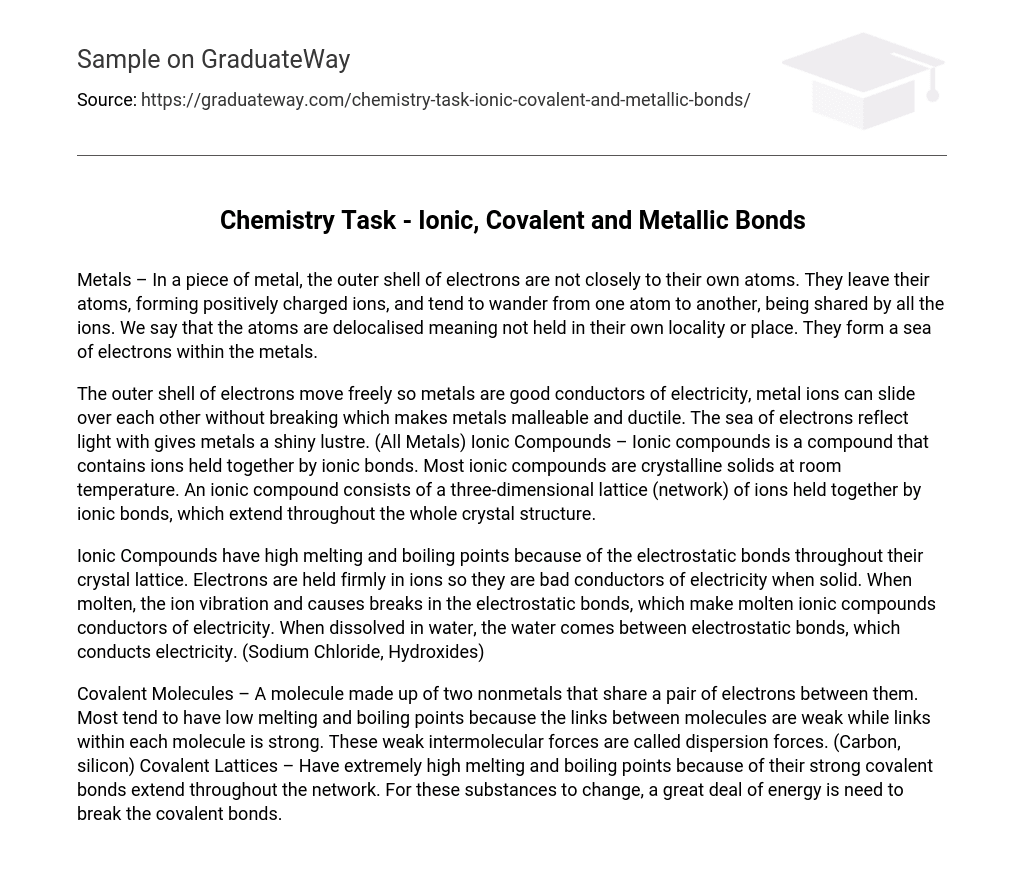In metals, the electrons in the outer shell are not closely bound to their own atoms. Instead, they become positively charged ions and freely move from one atom to another, creating a shared pool of electrons known as a “sea of electrons”. This phenomenon, known as delocalization, means that the atoms in metals are not confined to a specific locality or position.
Metals are excellent conductors of electricity due to the unrestricted movement of electrons in their outer shell. Additionally, metals possess malleability and ductility as their ions can slide over one another without fracturing. The presence of a sea of electrons in metals contributes to their attractive shiny appearance. Conversely, ionic compounds refer to compounds composed of ions bonded together by ionic bonds. At room temperature, most ionic compounds exist as crystalline solids. These compounds consist of an interconnected lattice structure formed by the extensive network of ionic bonds throughout the entire crystal.
Ionic Compounds exhibit high melting and boiling points due to the presence of electrostatic bonds within their crystal lattice. The electrons within ions are strongly held, resulting in their poor conductivity of electricity when in a solid state. However, when these compounds are in a molten state, the vibration of ions can lead to the breaking of electrostatic bonds, enabling them to conduct electricity. Additionally, when dissolved in water, the water molecules intervene between the electrostatic bonds, facilitating the conductivity of electricity. (e.g., Sodium Chloride, Hydroxides)
Covalent Molecules are formed by the bonding between two nonmetals, where they share a pair of electrons. They often have low melting and boiling points due to weak intermolecular forces called dispersion forces, while the links within each molecule are strong. Examples of covalent molecules are Carbon and silicon.
On the other hand, Covalent Lattices have very high melting and boiling points because their strong covalent bonds extend throughout the lattice structure. Breaking these covalent bonds requires a significant amount of energy.





